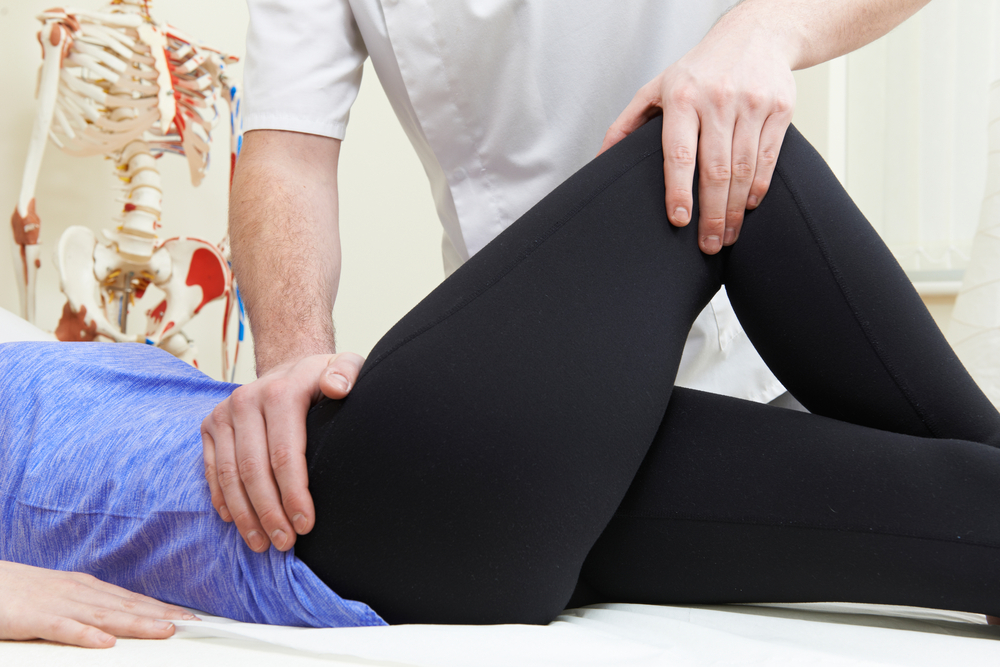I was asked today “As a chiropractor, do you treat hips?” This is not the first time that I have been asked this question, not the first time this week even. But yes, chiropractors treat hip problems. We also treat knee, ankle, and foot problems. We might have different approaches, techniques, and tools to treat these problems but as a general rule most doctors treat these conditions.
At [Core] we desire to do more than improve these problems beyond just feeling better. We desire to maximize proper hip, knee, and lower leg movement allowing the patient to perform better and prevent the next injury. We also strive for each patient to have a deeper understanding of the joint, the muscles, and the biomechanics of the lower extremity. We also want to help our patients investigate how to train more efficiently and perform better self-care to fully achieve their goals.
We want to start this investigation by discussing today the most important muscle to the hip and knees, the gluteus medius. The lesser known cousin of the gluteus maximus, the g. medius is not discussed with as much frequency in the fitness magazines as the g. max, because it is much smaller in size. However, it makes up for it’s small girth by being the key to proper hip and knee motion and its involvement in nearly every hip and knee overuse condition.
The Role of the Gluteus Medius
The gluteus medius has been shown to be the most influential dynamic stabilizer of the hip and pelvis. It effectively keeps the pelvis stable and in a neutral position when you are standing on one leg. If the pelvis shifts while walking due to a weak g. medius a loss of speed, power, and stability occurs. It is equivalent to walking on marbles when one has a weak g. medius. You lose proper balance, pelvic muscles have to overcompensate, motion is slower, and their is a greater risk of falling. As you can see in the photo, weakness of the right gluteus medius will cause the left hip to drop when standing on the right leg. These factors together are likely why dysfunction of this muscle is commonly found in several pathologies, such as iliotibial band, patellofemoral injuries, ACL, and ankle injuries. Watch our one leg step down test video to better assess your g. medius and your lower extremity stability.
Treating the Gluteus Medius
Treating and rehabilitating the gluteus medius should begin with treatment by a qualified practitioner to reduce or eliminate soft-tissue lesions that inhibit g. medius function. At [Core] we use a patented soft-tissue technique called Active Release Technique® (ActiveRelease.com) to reduce these lesions. This special technique allows us to quickly progress to the rehabilitative phase of care, therapeutic exercise. The rehabilitative phase should follow a progression designed to gradually enhance motor control, endurance, and strength. The program is broken down into three phases:
- Phase I: Nonweightbearing and basic weight bearing exercises. Criteria to progress to stage II is that the patient can hold their pelvis level during single leg stance for 30 seconds.
- Phase II: The second stage progresses the weight-bearing exercises and gradually progressing stability exercises.
- Phase III: The third stage is used for athletes and designed to prepare them for function, sport-specific movement patterns.
Gluteus Medius Exercise Progression
Clam Exercise
From a side-lying position place feet and knees together with a slight 30 degree bend at the knees. Without rolling the pelvis backward separate the knees 8” and slowly return to the starting position. Repeat 8-15 times for 2 sets.
Hip Abduction
From a side-lying position with your legs straight lift the top leg towards the ceiling. Remember to utilize the hip muscles for this exercise and to not hike the hip bone to the shoulder. Slowly return the leg to the starting position. Repeat 8-15 times for 2 sets.
Side Steps
With a piece of resistance tubing looped around the ankles, feet, or knees take a side step of 24”. Remember to be in athletic position with your knees and hips slightly bent but your torso upright. Take 10-20 steps in both directions. Repeat 2-3X. If you want a full body workout try holding one kettlebell in one hand away from the body. The unequal weight will challenge your balance and core stability.
One-Leg Squat
While standing on one leg with your knee and hip flexed reach forward to touch the top of your shoe. Alternatively, place a water bottle in front of you and reach to touch the top of the bottle. Always reach with the opposite arm than the foot you are standing on. Repeat 5-10X and for 2 sets. Avoid bending through the lumbar spine and/or only through the knee. Most of the movement should be at the hip.
One-Leg Hop
From a one leg standing position perform a short hop over a line or jump rope on the floor. The jump should be shallow and quick while retaining a neutral spine and pelvis. Repeat quickly for 30 seconds for 2 sets.
Conclusion
The key to healthy hip and knee joints relies upon the stability and function of the gluteus medius. The g. medius can be easily trained to it’s pinnacle operation with a few minutes of training per day. 3-5 exercises performed consistently everyday for several weeks can be the right prescription to rehabilitate your hip and knee problems. If you have more questions or are looking for some new exercises ask Dr. Rich which exercises are right for you. You can click the “Ask the Doctor” link on our web site, or you’re welcome to make an appointment at our Roanoke, Virginia chiropractic office.
Office Schedule
Our office is closed June 1-8, as I will be attending an ART® certification class. Please see our front desk to re-schedule your appointments if needed. Thank you!

Daryl C. Rich, DC, CSCS, ART®





